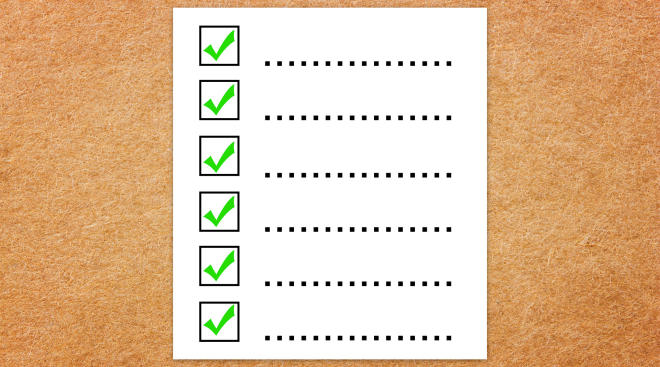How to Make Sense of Your Hospital Bills After Birth
Having a baby can be stressful. From giving birth to caring for an infant, there’s a lot to prepare for, and you likely have a ton of questions. However, one topic your childbirth class probably won’t cover is how to tackle the mountain of hospital bills you’ll receive post-delivery. Even if you have good health insurance, you need to be prepared.
It’s a daunting task, to be sure. I have a PhD in public health and specialize in health insurance—but when I got my hospital bills after giving birth, even I found them overwhelming.
During your hospital stay, you’ll encounter many different health care professionals, and they may all bill separately. That adds up to a lot of bills to keep track of! Plus, those bills will be detailed with medical codes you most likely aren’t going to understand. On top of all that, regardless of how prepared you are, it can be near impossible to predict how much your delivery and hospital stay will cost, let alone how much you will owe given your insurance coverage. It’s enough to make anyone’s head spin.
Need help? Here’s a breakdown of what you can expect and how you can make sense of all that paperwork, so you don’t end up paying more than what’s necessary.
An easy way to avoid extravagant medical fees is to set aside time before you have the baby and check to make sure your doctor and hospital are “in-network .” Your insurance plan likely has contracts with certain doctors and facilities that are considered in your network. Seeing a doctor or going to a hospital outside of your network may still be covered, though at a higher out-of-pocket cost to you. If you’re in a Health Maintenance Organization (HMO) or an Exclusive Provider Organization (EPO) , you may have out-of-network coverage only for emergencies, so it’s extra-important to check. Under your plan benefits you’ll see that you have different deductibles, coinsurance and out-of-pocket maximums for in- and out-of-network care.
Not all the mail you receive regarding your care will be bills; you should also receive an explanation of benefits (EOBs) from your insurer. Think of the EOB as a guide to your bills. EOBs are breakdowns of health care claims. Claims are how doctors and facilities are reimbursed for providing services. When you go to the doctor, he or she will record all the services and care provided using medical coding systems. Generally, the amount the doctor or facility is eligible to receive from the insurance company is based on those codes, and, in turn, so is the amount you owe.
When reading the EOB, you may notice that there are multiple prices associated with a service: the amount billed, the allowed amount and the amount you owe.
The amount billed is the price the doctor or facility says that service (identified by billing codes) is worth. This amount is the starting price that hospitals use when entering into negotiations with insurers and may be several times higher than the price that will be relevant for you. However, if you are uninsured, this may be the amount you would owe (without any support or discounts).
The allowed amount is the result of negotiations between the insurer and hospital; it’s the price the insurer will ultimately cover. Your insurance plan will pay a percentage of the allowed amount and the remainder is what you owe. What you owe will be broken down by your plan benefits—for example, what you pay towards your deductible and what you owe in coinsurance.
The other thing you’ll notice about the EOB is that the hospital, doctor and any other specialists you may encounter (pediatricians, anesthesiologists, radiologists, etc.) may bill separately for their part of your care. A single doctor may also provide more than one type of service, so the EOB may include multiple bills from a single provider. Not all doctors providing services during your stay will be under the same contract with your insurer—which is important to note, since it could potentially lead to large medical costs for you.
When an insurer negotiates with a hospital, they often contract with a group of doctors who are staffed by or contracted with that hospital (for example, your obstetrician). However, sometimes the insurer is unable to agree with some specialists on a negotiated rate for their services. For example, if the anesthesia team at the hospital says a procedure costs $3,000 (amount billed) and the insurer says they will only pay $1,200 (allowed amount), the anesthesia team may claim that amount of reimbursement is inadequate. In that case, they may bill you for the $1,800 difference. This is referred to as “balanced billing” (because you have to pay the balance).
Congress is looking to regulate this practice, but there are conflicting views on how to resolve the problem. Various state laws address the issue, but they may or may not cover you, depending on the type of insurance you have. If your employer is self-insured, they may not be governed by state laws. The only way to know if your employer is self-insured is to ask your company’s HR representative.
Just to add a bit more confusion, you may receive two EOBs, one for you and one for your baby. Once the baby is born, they are their own entity (though their name will just be “Newborn”). While the birth should be covered under the Newborns’ and Mothers’ Health Protection Act of 1996 , you will need to enroll your baby on your health insurance plan within 30 days of their birth in order for their pediatric care to be covered. (Care during the first month should be covered retroactively).
You do not need to make payments when you get the EOB—instead, wait for the organizations to bill you. It’s important that you review each bill carefully, as mistakes do happen. There can be a lag in the time it takes an insurer to reimburse a provider for their portion of the bill, and consequently a group of doctors or a facility may bill you for the full amount billed, without recognizing plan discounts or any amounts your insurer has already paid.
If you receive a higher-than-expected bill, you should always start by calling both the group that billed you and your insurer, and take notes on the calls. Another resource for bill management is a care manager who can help you navigate the complex billing process. Contact your insurer or hospital billing department to be connected with a care manager.
Good luck, and I hope your billing process proves easy—after all, you’ll have enough on your hands with a squirming baby!
Emily Gillen has a PhD in health policy and a Master’s degree in economics. She specializes in research related to health insurance and access to care. Emily and her husband have a 4-month old baby boy. You can find her on LinkedIn.
Navigate forward to interact with the calendar and select a date. Press the question mark key to get the keyboard shortcuts for changing dates.




















































